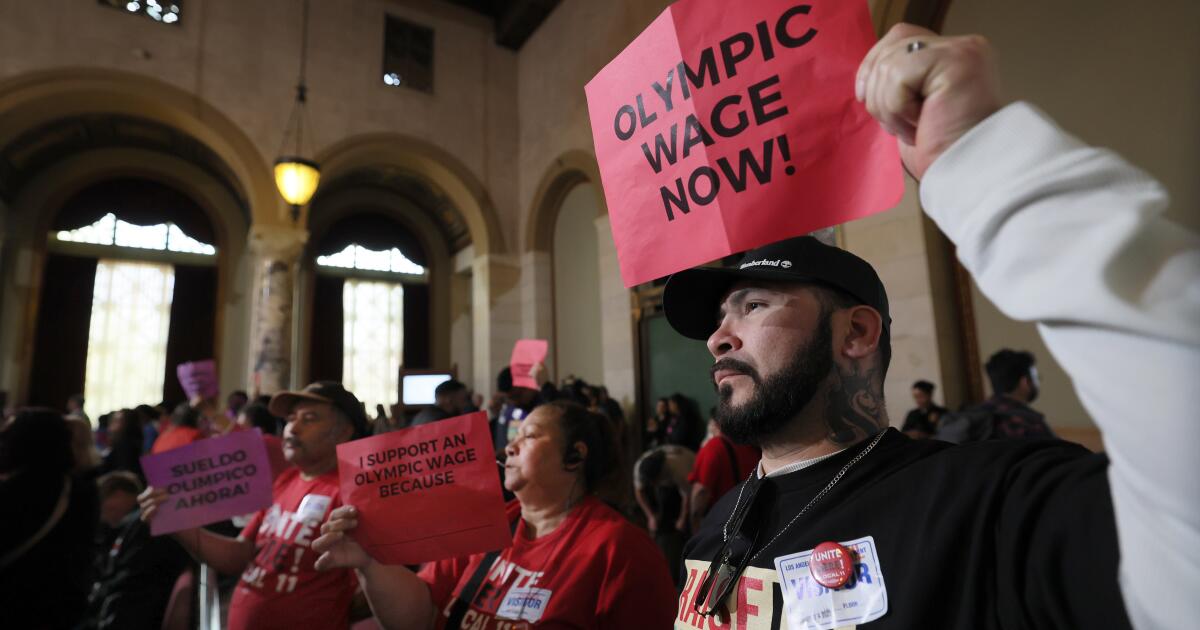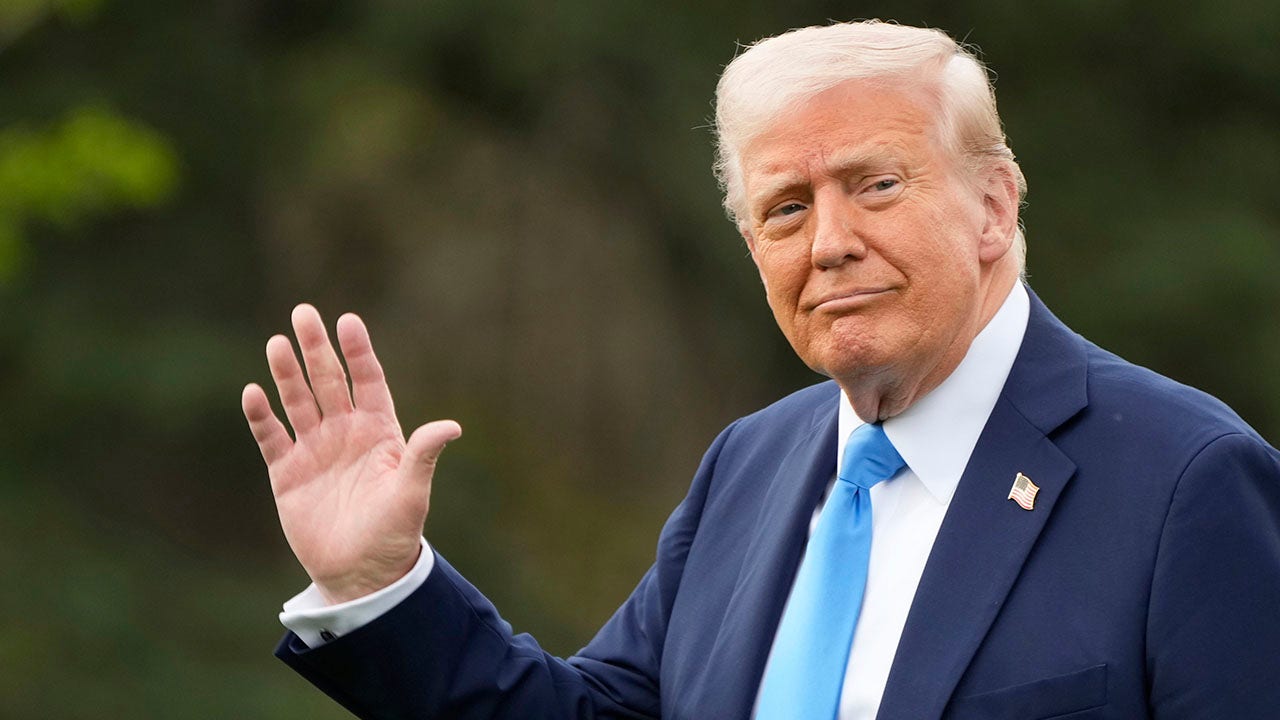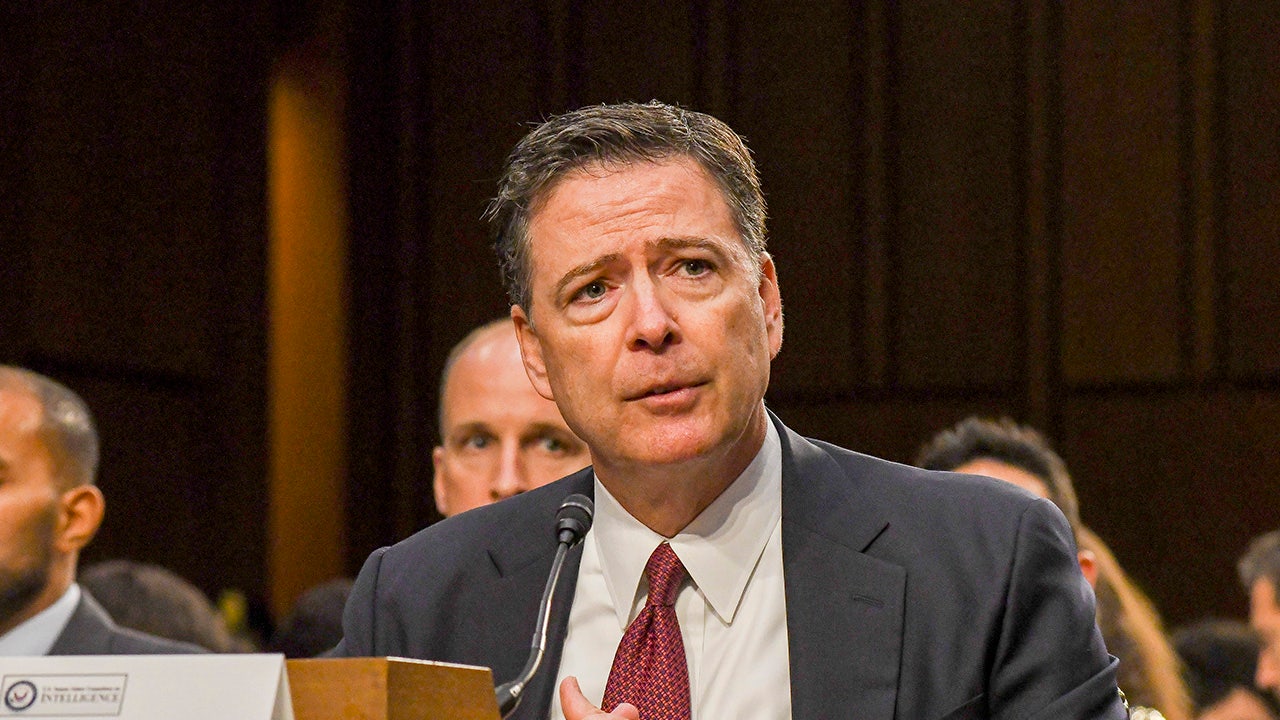Business
Cracking Down on Dissent, Russia Seeds a Surveillance Supply Chain

As the war in Ukraine unfolded last year, Russia’s best digital spies turned to new tools to fight an enemy on another front: those inside its own borders who opposed the war.
To aid an internal crackdown, Russian authorities had amassed an arsenal of technologies to track the online lives of citizens. After it invaded Ukraine, its demand grew for more surveillance tools. That helped stoke a cottage industry of tech contractors, which built products that have become a powerful — and novel — means of digital surveillance.
The technologies have given the police and Russia’s Federal Security Service, better known as the F.S.B., access to a buffet of snooping capabilities focused on the day-to-day use of phones and websites. The tools offer ways to track certain kinds of activity on encrypted apps like WhatsApp and Signal, monitor the locations of phones, identify anonymous social media users and break into people’s accounts, according to documents from Russian surveillance providers obtained by The New York Times, as well as security experts, digital activists and a person involved with the country’s digital surveillance operations.
President Vladimir V. Putin is leaning more on technology to wield political power as Russia faces military setbacks in Ukraine, bruising economic sanctions and leadership challenges after an uprising led by Yevgeny V. Prigozhin, the commander of the Wagner paramilitary group. In doing so, Russia — which once lagged authoritarian regimes like China and Iran in using modern technology to exert control — is quickly catching up.
“It’s made people very paranoid, because if you communicate with anyone in Russia, you can’t be sure whether it’s secure or not. They are monitoring traffic very actively,” said Alena Popova, a Russian opposition political figure and digital rights activist. “It used to be only for activists. Now they have expanded it to anyone who disagrees with the war.”
The effort has fed the coffers of a constellation of relatively unknown Russian technology firms. Many are owned by Citadel Group, a business once partially controlled by Alisher Usmanov, who was a target of European Union sanctions as one of Mr. Putin’s “favorite oligarchs.” Some of the companies are trying to expand overseas, raising the risk that the technologies do not remain inside Russia.
The firms — with names like MFI Soft, Vas Experts and Protei — generally got their start building pieces of Russia’s invasive telecom wiretapping system before producing more advanced tools for the country’s intelligence services.
Simple-to-use software that plugs directly into the telecommunications infrastructure now provides a Swiss-army knife of spying possibilities, according to the documents, which include engineering schematics, emails and screen shots. The Times obtained hundreds of files from a person with access to the internal records, about 40 of which detailed the surveillance tools.
One program outlined in the materials can identify when people make voice calls or send files on encrypted chat apps such as Telegram, Signal and WhatsApp. The software cannot intercept specific messages, but can determine whether someone is using multiple phones, map their relationship network by tracking communications with others, and triangulate what phones have been in certain locations on a given day. Another product can collect passwords entered on unencrypted websites.
These technologies complement other Russian efforts to shape public opinion and stifle dissent, like a propaganda blitz on state media, more robust internet censorship and new efforts to collect data on citizens and encourage them to report social media posts that undermine the war.
They add up to the beginnings of an off-the-shelf tool kit for autocrats who wish to gain control of what is said and done online. One document outlining the capabilities of various tech providers referred to a “wiretap market,” a supply chain of equipment and software that pushes the limits of digital mass surveillance.
The authorities are “essentially incubating a new cohort of Russian companies that have sprung up as a result of the state’s repressive interests,” said Adrian Shahbaz, a vice president of research and analysis at the pro-democracy advocacy group Freedom House, who studies online oppression. “The spillover effects will be felt first in the surrounding region, then potentially the world.”
Beyond the ‘Wiretap Market’
Over the past two decades, Russian leaders struggled to control the internet. To remedy that, they ordered up systems to eavesdrop on phone calls and unencrypted text messages. Then they demanded that providers of internet services store records of all internet traffic.
The expanding program — formally known as the System for Operative Investigative Activities, or SORM — was an imperfect means of surveillance. Russia’s telecom providers often incompletely installed and updated the technologies, meaning the system did not always work properly. The volume of data pouring in could be overwhelming and unusable.
At first, the technology was used against political rivals like supporters of Aleksei A. Navalny, the jailed opposition leader. Demand for the tools increased after the invasion of Ukraine, digital rights experts said. Russian authorities turned to local tech companies that built the old surveillance systems and asked for more.
The push benefited companies like Citadel, which had bought many of Russia’s biggest makers of digital wiretapping equipment and controls about 60 to 80 percent of the market for telecommunications monitoring technology, according to the U.S. State Department. The United States announced sanctions against Citadel and its current owner, Anton Cherepennikov, in February.
“Sectors connected to the military and communications are getting a lot of funding right now as they adapt to new demands,” said Ksenia Ermoshina, a senior researcher who studies Russian surveillance companies with Citizen Lab, a research institute at the University of Toronto.
The new technologies give Russia’s security services a granular view of the internet. A tracking system from one Citadel subsidiary, MFI Soft, helps display information about telecom subscribers, along with statistical breakdowns of their internet traffic, on a specialized control panel for use by regional F.S.B. officers, according to one chart.
Another MFI Soft tool, NetBeholder, can map the locations of two phones over the course of the day to discern whether they simultaneously ran into each other, indicating a potential meeting between people.
A different feature, which uses location tracking to check whether several phones are frequently in the same area, deduces whether someone might be using two or more phones. With full access to telecom network subscriber information, NetBeholder’s system can also pinpoint the region in Russia each user is from or what country a foreigner comes from.
Protei, another company, offers products that provide voice-to-text transcription for intercepted phone calls and tools for identifying “suspicious behavior,” according to one document.
Russia’s enormous data collection and the new tools make for a “killer combo,” said Ms. Ermoshina, who added that such capabilities are increasingly widespread across the country.
Citadel and Protei did not respond to requests for comment. A spokesman for Mr. Usmanov said he “has not participated in any management decisions for several years” involving the parent company, called USM, that owned Citadel until 2022. The spokesman said Mr. Usmanov owns 49 percent of USM, which sold Citadel because surveillance technology was never within the firm’s “sphere of interest.”
VAS Experts said the need for its tools had “increased due to the complex geopolitical situation” and volume of threats inside Russia. It said it “develops telecom products which include tools for lawful interception and which are used by F.S.B. officers who fight against terrorism,” adding that if the technology “will save at least one life and people well-being then we work for a reason.”
No Way to Mask
As the authorities have clamped down, some citizens have turned to encrypted messaging apps to communicate. Yet security services have also found a way to track those conversations, according to files reviewed by The Times.
One feature of NetBeholder harnesses a technique known as deep-packet inspection, which is used by telecom service providers to analyze where their traffic is going. Akin to mapping the currents of water in a stream, the software cannot intercept the contents of messages but can identify what data is flowing where.
That means it can pinpoint when someone sends a file or connects on a voice call on encrypted apps like WhatsApp, Signal or Telegram. This gives the F.S.B. access to important metadata, which is the general information about a communication such as who is talking to whom, when and where, as well as if a file is attached to a message.
To obtain such information in the past, governments were forced to request it from the app makers like Meta, which owns WhatsApp. Those companies then decided whether to provide it.
The new tools have alarmed security experts and the makers of the encrypted services. While many knew such products were theoretically possible, it was not known that they were now being made by Russian contractors, security experts said.
Some of the encrypted app tools and other surveillance technologies have begun spreading beyond Russia. Marketing documents show efforts to sell the products in Eastern Europe and Central Asia, as well as Africa, the Middle East and South America. In January, Citizen Lab reported that Protei equipment was used by an Iranian telecom company for logging internet usage and blocking websites. Ms. Ermoshina said the systems have also been seen in Russian-occupied areas of Ukraine.
For the makers of Signal, Telegram and WhatsApp, there are few defenses against such tracking. That’s because the authorities are capturing data from internet service providers with a bird’s-eye view of the network. Encryption can mask the specific messages being shared, but cannot block the record of the exchange.
“Signal wasn’t designed to hide the fact that you’re using Signal from your own internet service provider,” Meredith Whittaker, the president of the Signal Foundation, said in a statement. She called for people worried about such tracking to use a feature that sends traffic through a different server to obfuscate its origin and destination.
In a statement, Telegram, which does not encrypt all messages by default, also said nothing could be done to mask traffic going to and from the chat apps, but said people could use features it had created to make Telegram traffic harder to identify and follow. WhatsApp said in a statement that the surveillance tools were a “pressing threat to people’s privacy globally” and that it would continue protecting private conversations.
The new tools will likely shift the best practices of those who wish to disguise their online behavior. In Russia, the existence of a digital exchange between a suspicious person and someone else can trigger a deeper investigation or even arrest, people familiar with the process said.
Mr. Shahbaz, the Freedom House researcher, said he expected the Russian firms to eventually become rivals to the usual purveyors of surveillance tools.
“China is the pinnacle of digital authoritarianism,” he said. “But there has been a concerted effort in Russia to overhaul the country’s internet regulations to more closely resemble China. Russia will emerge as a competitor to Chinese companies.”

Business
Video: How Staffing Shortages Have Plagued Newark Airport

What’s causing major flight delays and disruptions at Newark Liberty International Airport? Niraj Chokshi, a reporter at The New York Times covering transportation, explains how a staffing shortage has contributed to the chaos and what’s being done to address it.
Business
L.A. council members were told a vote could violate public meeting law. They voted anyway

When Los Angeles City Council members took up a plan to hike the wages of tourism workers this week, they received some carefully worded advice from city lawyers: Don’t vote on this yet.
Senior Assistant City Atty. Michael J. Dundas advised them on Wednesday — deep into their meeting — that his office had not yet conducted a final legal review of the flurry of last-minute changes they requested earlier in the day.
Dundas recommended that the council delay its vote for two days to comply with the Ralph M. Brown Act, the state’s open meeting law.
“We advise that the posted agenda for today’s meeting provides insufficient notice under the Brown Act for first consideration and adoption of an ordinance to increase the wages and health benefits for hotel and airport workers,” Dundas wrote.
The council pressed ahead anyway, voting 12-3 to increase the minimum wage of those workers to $30 per hour by 2028, despite objections from business groups, hotel owners and airport businesses.
Then, on Friday, the council conducted a do-over vote, taking up the rewritten wage measure at a special noon meeting — one called only the day before. The result was the same, with the measure passing again, 12-3.
Some in the hotel industry questioned why Council President Marqueece Harris-Dawson, who runs the meetings, insisted on moving forward Wednesday, even after the lawyers’ warning.
Jackie Filla, president and chief executive of the Hotel Assn. of Los Angeles, said the decision to proceed Wednesday gave a political boost to Unite Here Local 11, which represents hotel workers. The union had already scheduled an election for Thursday for its members to vote on whether to increase their dues.
By approving the $30 per hour minimum wage on Wednesday, the council gave the union a potent selling point for the proposed dues increase, Filla said.
“It looks like it was in Unite Here’s financial interest to have that timing,” she said.
Councilmember Monica Rodriguez, who opposed the wage increases, was more blunt.
“It was clear that Marqueece intended to be as helpful as possible” to Unite Here Local 11, “even if it meant violating the Brown Act,” she said.
Harris-Dawson spokesperson Rhonda Mitchell declined to say why her boss pushed for a wage vote on Wednesday after receiving the legal advice about the Brown Act. That law requires local governments to take additional public comment if a legislative proposal has changed substantially during a meeting.
Mitchell, in a text message, said Harris-Dawson scheduled the new wage vote for Friday because of a mistake by city lawyers.
“The item was re-agendized because of a clerical error on the City Attorney’s part — and this is the correction,” she said.
Mitchell did not provide details on the error. However, the wording on the two meeting agendas is indeed different.
Wednesday’s agenda called for the council to ask city lawyers to “prepare and present” amendments to the wage laws. Friday’s agenda called for the council to “present and adopt” the proposed changes.
Maria Hernandez, a spokesperson for Unite Here Local 11, said in an email that her union does not control the City Council’s schedule. The union’s vote on higher dues involved not just its L.A. members but also thousands of workers in Orange County and Arizona, Hernandez said.
“The timing of LA City Council votes is not up to us (sadly!) — in fact we were expecting a vote more than a year ago — nor would the precise timing be salient to our members,” she said.
Hernandez said Unite Here Local 11 members voted “overwhelmingly” on Thursday to increase their dues, allowing the union to double the size of its strike fund and pay for “an army of organizers” for the next round of labor talks. She did not disclose the size of the dues increase.
Dundas’ memo, written on behalf of City Atty. Hydee Feldstein Soto, was submitted late in Wednesday’s deliberations, after council members requested a number of changes to the minimum wage ordinance. At one point, they took a recess so their lawyers could work on the changes.
By the time the lawyers emerged with the new language, Dundas’ memo was pinned to the public bulletin board in the council chamber, where spectators quickly snapped screenshots.
Business
Epic Games says Apple blocked 'Fortnite' in U.S. app store

Epic Games on Friday said that its popular game “Fortnite” will be offline on Apple devices because the iPhone maker blocked its recent app update.
The dispute comes just weeks after Epic Games and other app developers cheered a judge’s ruling that limited the commissions that Apple makes through third party apps distributed through its app store.
Apple received a scathing rebuke from U.S. District Judge Yvonne Gonzalez Rogers, who sided with Epic Games, which alleged that the Cupertino, Calif., tech giant ran afoul of an order she issued in 2021 after finding the company engaged in anticompetitive behavior.
Under the ruling, Apple can’t collect commissions on purchases U.S. customers make through links inside iPhone apps that direct them to outside websites. Developers, which make money by selling digital goods and services via their apps and games, want to avoid giving Apple a cut of their revenue by sending customers to other websites.
“That [Apple] thought this court would tolerate such insubordination was a gross miscalculation,” the judge wrote in her ruling.
Many developers applauded the court’s ruling, which limits what they call the Apple tax, and said they would pass on the savings to customers.
Epic Games’ Chief Executive Tim Sweeney earlier this month said “Fornite” would return to the App Store in the U.S. and possibly worldwide if Apple extends “the court’s friction free, Apple tax-free framework” globally. But on Friday, the “Fortnite” X account said that Apple blocked its submission.
“Now, sadly, Fortnite on iOS will be offline worldwide until Apple unblocks it,” the account posted. Epic Games did not return requests for further comment.
Apple said on Friday that it asked that “Epic Sweden resubmit the app update without including the U.S. storefront of the App Store so as not to impact Fortnite in other geographies.”
“We did not take any action to remove the live version of Fortnite from alternative distribution marketplaces,” Apple said in a statement.
Rob Enderle, principal analyst with advisory services firm Enderle Group, said the recent ruling applies to the U.S. and Apple wants to retain the rest of its control worldwide. Apple makes significant money through apps.
“Apple is using their … strength to prevent ‘Fortnite’ from benefiting globally from their core win,” Enderle said.
Epic Games filed its lawsuit against Apple in 2020. “Fornite” generates revenue by letting people buy digital goods, such as “skins,” in the game, and Epic wanted to let users buy items outside the Apple system to avoid the company’s commission.
While the judge ruled that Apple did not have a monopoly in the mobile gaming market, the court ordered Apple to let app developers put links in its apps so customers could make outside purchases and bypass the company’s commission fee. Apple, however, defied the order, the court said.
Apple limited the ways that developers could communicate with its customers about out-of-app purchases and used wording that discouraged users from clicking on those links, the judge wrote. Apple would charge a commission fee for any goods or services purchased within seven days of a consumer clicking on a link that took them out of the app, the ruling said.
Apple is appealing the ruling and has said it strongly disagreed with the judge’s decision.
-

 Austin, TX1 week ago
Austin, TX1 week agoBest Austin Salads – 15 Food Places For Good Greens!
-

 Technology1 week ago
Technology1 week agoNetflix is removing Black Mirror: Bandersnatch
-

 World1 week ago
World1 week agoThe Take: Can India and Pakistan avoid a fourth war over Kashmir?
-

 News1 week ago
News1 week agoReincarnated by A.I., Arizona Man Forgives His Killer at Sentencing
-

 News1 week ago
News1 week agoWho is the new Pope Leo XIV and what are his views?
-

 Entertainment1 week ago
Entertainment1 week agoReview: 'Forever' is a sweet ode to first love (and L.A.) based on Judy Blume's novel
-

 News1 week ago
News1 week agoEfforts Grow to Thwart mRNA Therapies as RFK Jr. Pushes Vaccine Wariness
-

 Politics1 week ago
Politics1 week agoDepartment of Justice opens criminal investigation into NY AG Letitia James















